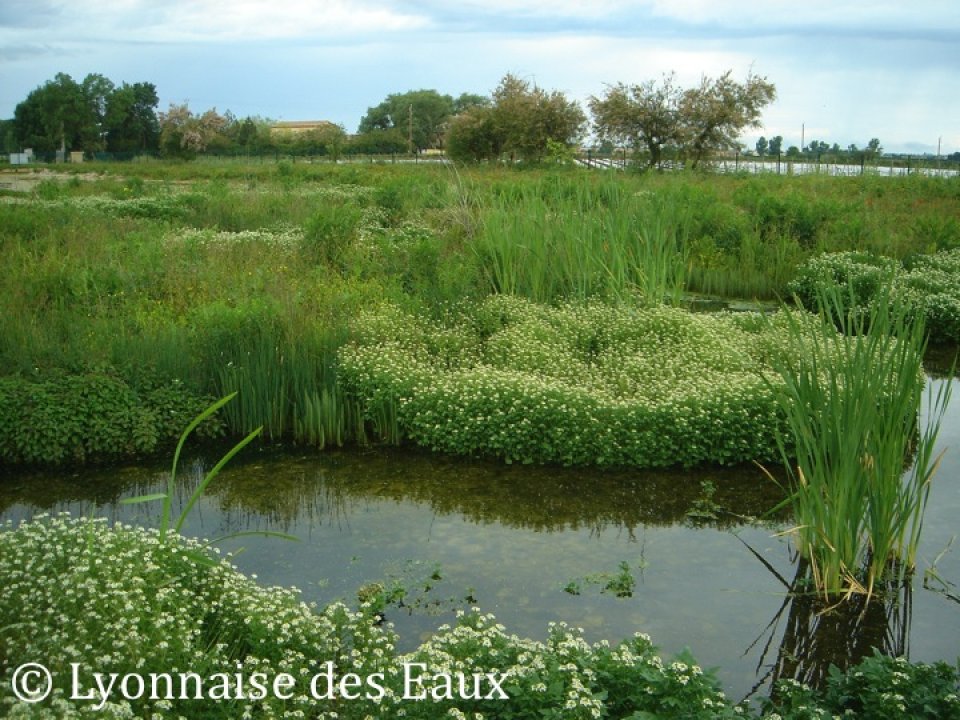
Implementation scale: Neighborhood, park, object
Impact scale: Neigborhood, City, National (Duplication of Libellule zona trhoughout the country)
Urban density: Low (suburb at the limit with rural areas, etc.)
The goal of the project is to develop and industrialise planted discharge areas at the
exit of treatment plants to convert them into a genuine artificial wetland guaranteeing the treatment of micropollutants and ecological diversity.
Other environmetal friendly solutions: Phytoremediation
An effective solution: 317 molecules sought, 81% of the quantified molecules were
eliminated at → 30% of which more than half → 70%.
- Developing climate change adaptation; improving risk management and resilience
- Increase infiltration / Water storage
- Reducing temperature at meso or micro scale
- Restoring ecosystems and their functions
- Improve connectivity and functionality of green and blue infrastructures
- Increase achievements of biodiversity targets
- Increase Biodiversity
- Increase quality and quantity of green and blue infrastructures
- Creation of green jobs relating to construction & maintenance of NBS
- Improve water quality
- Increase population & infrastructures protected by NBS
- Increase willingness to invest in NBS
- Reduce costs for water treatments
Process enablers:
Knowledge drivers → Information accessibility → knowledge platforms
Knowledge of the NbS in the city within the stakeholders were available. We had a facility to acquire the missing knowledge through various partnerships.
Process inhibitors:
... → ... → ...
...
Expected life time of the intervention: ...
Feedback: ...
Expected time for the NbS to become fully effective after its implementation: ...
Dates (for project delivered): 2015
BUSINESS MODEL:
Business cluster: ...
Business model: ...
An effective solution. 317 molecules sought, 81% of the quantified molecules were
eliminated at> 30% of which more than half> 70%
Global (estimated) cost of the project: 1M€- 5M€
Financing mechanism: cluster4 public private
There are 2 projects in series, for the first to 300 k€, 50% AERMC, 20% county council of Herault, France (34), 30% Lyonnaise.
- Objects Shapes
- Water
- Constructed wetlands and built structures for water management
Olivier , DAMAS (olivier.damas@plante-et-cite.fr)
Plante & Cité (Non-profit organization - https://www.plante-et-cite.fr/)
Maison du Végétal, 26 Rue Jean Dixmeras, 49000 Angers
Further information
Nature4Cities (https://www.nature4cities.eu/) aims to develop a knowledge diffusion around Nature-Based Solution (NbS) and a decision support platform through new collaborative models.
This project is part of the Nature4Cities's pioneer case studies database, it will feed the observatory, NbS pre-selection and replication tools, gathered into the Geocluster4NBS.
This project was chosen as a pioneer case study for the following reasons: the project is a complementary treatment of micro
pollutants and by creating biodiversity linked to the influx of water.
Nature4Cities project has received funding from the European Union’s Horizon 2020 research and innovation program under grant agreement No 730468.



